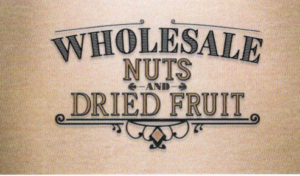The director of The Centers for Disease Control and Prevention (CDC) is keeping a close watch on this flu season and warning we could be faced with a pandemic flu. Last year’s statistics show the highest number of deaths from flu or complications with the virus since the dawn of modern tracking (an estimated 80,000 Americans died). Hard to believe that on the 100th year anniversary of the Spanish Flu pandemic, that our medically advanced society would be under threat, but holistic pharmacist, Sherry Torkos says the saying is true: An ounce of prevention is worth a pound of cure.
“While vaccination has an important role in preventing many serious diseases, including flu, it is not 100 percent effective and people need to be proactive and take other protective measures,” said Torkos, who has authored more than a dozen books on natural health and healing. “Before we had vaccinations, civilizations that were taking health precautions were safeguarded from illness and disease.” Some of the most notorious illnesses and diseases of our time came during the Middle Ages: the bubonic plague “Black Death,” leprosy and Saint Anthony’s fire (ergotism). Medicine in the Middle Ages was rooted in ancient Greek tradition and the greatest physician of that time was Hippocrates, known as the founder of medicine, who based his practice on observations and study of the human body with the belief that illness has a physical and rational explanation. Sherry Torkos shares information about three liquid remedies from the Middle Ages that are still fighting today’s toughest cases of flu, stomach aches, pains, and wounds:
Colloidal Silver: In the Middle Ages, silver spoons were given by wealthy godparents to babies a christening presents. Those “born with a silver spoon in their mouths” benefited from silver’s purifying and antibiotic properties especially during the bubonic plague (Black Death) when the poor were disproportionally affected because the rich were afforded extra immune support from their silverware.
Hippocrates wrote, silver has beneficial healing and anti-disease properties and praised silver for its tissue repair and wound healing abilities. In 1999, scientist Stephen L. Quinto made a breakthrough discovery with colloidal silver hydrosol by finding a particle size so fine that not even an electron microscope could detect, advancing colloidal silver technology by 120 years. Quinto developed Bio-Active Silver Hydrosol, which is more than 98 percent bioactive, making it easier for the body to absorb. It’s the most promising universal solution for immune support in human history to date (www.sovereignsilver.com).
Mint: Stomach pains and sickness were treated with mint in the Middle Ages.
There are two types of well-known mint: spearmint and peppermint, but they are not the same plant as peppermint actually is a natural hybrid of spearmint and is the more potent of the herbs. Peppermint aids in digestion and can settle the stomach due to its properties that dispel gas and relieve cramping. Oil of peppermint contains up to 78 percent menthol, capable of killing myriad microorganisms that are associated with digestive and other problems such as irritable bowel syndrome.
Turmeric: A popular spice of the Middle Ages for immune boosting and reduction of pain and inflammation, turmeric, is one of the most studied spices with more than 9,000 studies in medical research. Curcumin is the main active ingredient in turmeric and has powerful anti-inflammatory effects. Studies have shown that turmeric may have pain-reducing power equal in some cases to that of prescription and over-the-counter medications. You can take it as a supplement, use it as an ingredient in your food or consume it as a tea (or for an extra benefit, try a turmeric chi tea).
Check out more about Sherry at her website: www.sherrytorkos.com
Listen to Sherry and Mark here:
Middle Ages Medicine – Part 1
Middle Ages Medicine – Part 2




